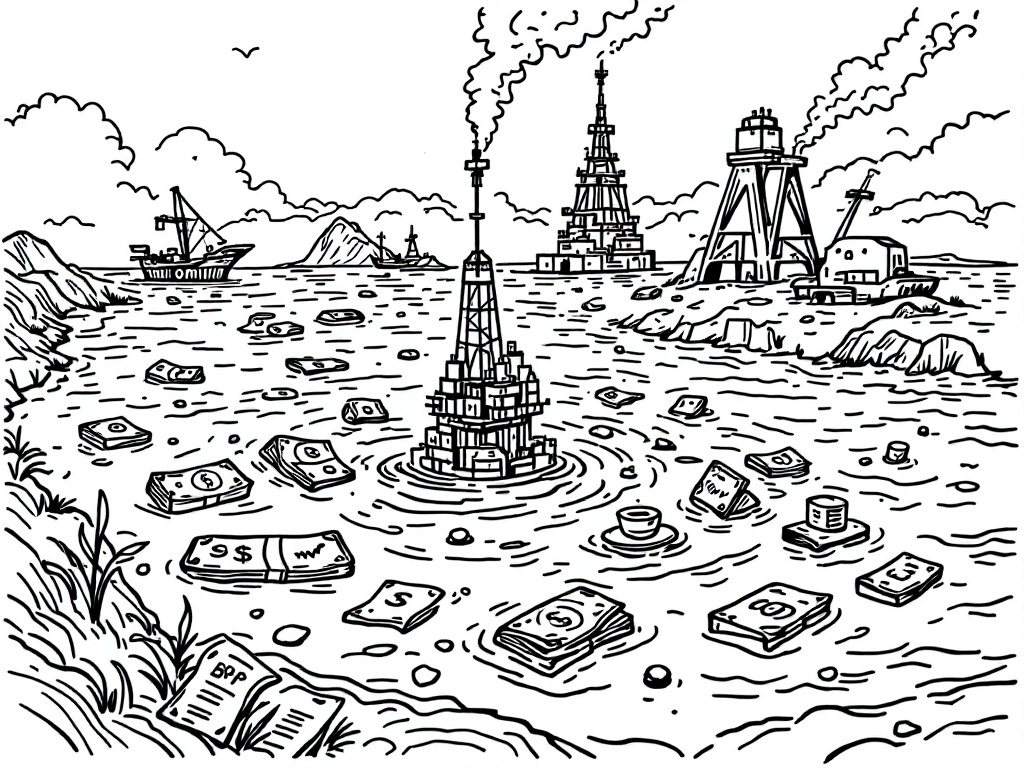BP Makes Significant Oil Discovery 120 Miles Off Louisiana Coast

Gulf of Mexico, Tuesday, 15 April 2025.
BP’s substantial oil find in the Gulf of America may transform U.S. energy independence, with the Far South prospect revealing potentially commercial hydrocarbon volumes in high-quality reservoirs.
The Strategic Importance of the Gulf of America
BP’s latest oil discovery at the Far South prospect in the Gulf of America, previously known as the Gulf of Mexico, emphasizes the strategic importance of this region to U.S. energy production and independence. This development comes after a directive by U.S. President Donald Trump, announced on January 20, 2025, which officially renamed the Gulf of Mexico to the Gulf of America. The newly discovered well is in the Green Canyon Block 584, approximately 120 miles off the Louisiana coast, situated in 4,092 feet of water, and was drilled to a total depth of 23,830 feet [1][2].
Collaboration between Industry Giants
This discovery results from a collaboration between BP, which holds a 57.5% operating interest in the project, and Chevron U.S.A. Inc., which holds the remaining 42.5% [2][3][4]. Together, these companies have uncovered oil in the high-quality Miocene reservoirs at the Far South prospect, with preliminary data suggesting potentially commercial volumes of hydrocarbons [1][2]. Over the next three years, BP plans to drill approximately 40 wells, with 10 to 15 wells scheduled for 2025 alone, underscoring BP’s commitment to reinforcing its upstream investment under its February 2025 strategy reset [3][5].
Potential Boost to Global Production
BP aims to leverage this discovery to strengthen its global upstream operations, which are projected to increase to 2.3 to 2.5 million barrels of oil equivalent per day by 2030. This target includes delivering approximately 1 million barrels per day from U.S. onshore and offshore activities. Significantly, BP intends to enhance its Gulf of America production capacity to over 400,000 barrels of oil equivalent per day by the end of the decade [1][4][6]. Andy Krieger, Senior Vice President of Gulf of America and Canada, highlighted that this discovery solidifies the region as a key area for growth and opportunity [2][3].
Economic and Environmental Considerations
While BP’s discovery is promising for energy production, it also faces environmental scrutiny. The company recently faced criticism after pivoting back to oil, reducing its renewable energy commitments. Additionally, BP faces financial pressures as its stock has seen a decrease of 27.95% over the past year, with a Hold consensus rating among analysts. The discovery, however, has bolstered BP’s market position as they continue to focus on aligning exploration with upstream growth strategies [6][5].
Sources
- www.bp.com
- www.rigzone.com
- www.upstreamonline.com
- www.industrialinfo.com
- www.offshore-energy.biz
- www.benzinga.com